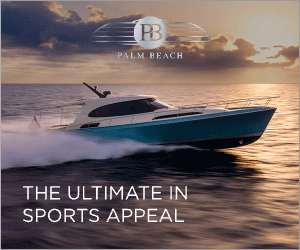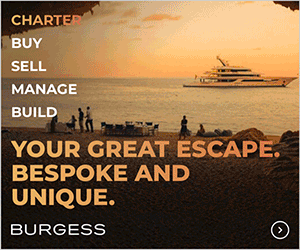Electric power in action
The world’s largest zero-emission, lightweight catamaran ferry is under construction at Incat Tasmania.
Photography by Incat
29 September 2024
Ordered by ferry company, Buquebús, South America, the new 130-metre ferry will be the world’s largest zero-emissions, lightweight catamaran ferry, and powered by a battery electric propulsion system and waterjets from Wärtsilä.
Incat’s long-term South American customer, Buquebús will operate the ferry between Argentina and Uruguay. It will have the capacity to carry 2,100 passengers and 225 vehicles, as well as a 2,000-square-metres Duty Free shop on board.
As the world’s largest battery-electric Ro-Pax ferry, it will be 100 percent battery electric. The energy storage system (ESS) battery storage at over 40MWh will be four times larger than any battery installation that has been constructed and installed anywhere in the world for the marine transport environment.
The batteries power a series of E-motors which drive the water jet propulsion system. The electrical system integration is by Wärtsilä and ESS by Corvus Energy.
The interest in these battery electric ships is very positive and Incat is now working toward the construction of its second but smaller battery-electric vehicle/passenger ferry.
Incat Founder Robert Clifford said, “We are proud to be building in Tasmania this first in class ship for Buquebus who like us share a vision to be at the leading edge of low emission shipping in the world. Incat has always been an innovator and once again we are leading the world and the world is taking notice.
“This worldwide interest in Incat’s capabilities to deliver electric ships is a great opportunity for Tasmania and we expect this interest to magnify.
“We are already increasing our workforce and have just finalised plans for the recruitment of at least another 200 employees over the next 12 months with the expectation that our workforce will more than double in coming years.”
Incat Managing Director Craig Clifford said, “The build of the Buquebus ship is leading the world in this type of ship construction and will have leading edge technology in terms of zero emissions propulsion and storage systems. Once in operation the shore-side charging systems will have 50 percent more capacity than any current installation world-wide.”
He continued: “The feedback from overseas has been extraordinarily positive I expect that we are going to see many more battery electric ships built here at Incat in Tasmania. The opportunities for jobs and investment here in Tasmania are exceptional.
“The Australian Federal Government has a clear plan for decarbonising the economy and with 100 percent renewable energy and already net zero emissions having been achieved here in Tasmania we are ideally placed to build zero emission ships for the world right here.
“In fact, due to Tasmania already having achieved overall net zero emissions we are the only location on the planet that is able to construct zero-emission, battery electric ships in an already net zero emissions environment for our customers”.
The equipment from Wärtsilä is scheduled to be delivered in the latter part of the year 2024, while the vessel itself is scheduled to be delivered to Buquebús in 2025.
The vessel will be fully battery-powered, and waterjets will be the main power for its electric motor.
The package of the battery modules and energy storage system will yield four times the power of any installed on today’s electric or hybrid ships.
Eight main propulsors, compact and lightweight axial flow WXJ1100 waterjets which are designed and optimised for medium speed 25 knots operation. The waterjets are driven by eight very efficient permanent magnet e-motors in a compact and lightweight design.
The battery modules and energy storage system package can provide four times the efficiency than any other electric/hybrid ship currently operating.
Incat has had a close relationship with Wärtsilä Waterjets for more than 30 years. During this time, Incat’s catamarans have got faster, larger and much more efficient.
Incat and Wärtsilä have broken a world speed record together. In 2012, Wärtsilä’s two 1,720mm axial flow waterjets powered Buquebús’ 99-metre vessel Francisco, which reached the astonishing speed of 58.1 knots (107.6 km/h), making it the world’s fastest ship, a record recognised by the Guinness Book of Records.
To date, Wärtsilä has delivered over 200 waterjets to Incat Shipyard.













